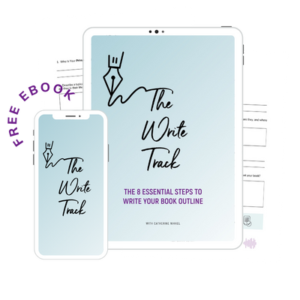Storytelling is an inevitable and natural aspect of our lives, yet telling the perfect story — an impactful story can be a whole different ball game. The understanding of it anyway.
Of course, we all regale our friends and colleagues with various stories, but why does it feel difficult to utilize those same strategies in business and marketing?
In business, successful storytellers use storytelling to build a rapport with potential consumers to help demonstrate why they should care about a particular product or service. When told right, they cultivate a feeling of community and commonality among individuals, a compelling and influential emotion.
But, how do you tell the right story which will sway your reader in wanting to become a devoted follower and potential customer? Here are my first three steps.
Telling a Perfect Story
1. Trusting the Teller
Arguably one of the most critical aspects of storytelling is having trust in the story’s teller. We all know those who like to “embellish” their stories a little too much and thus force us to take everything they say with a grain of salt. If you are known to do that and cannot build trust, it will be hard to captivate an audience.
Especially now more than ever, transparency is vital. Take a look at current social media trends as a note — long gone are those perfectly airbrushed people — nowadays, video content and TikTokers have taken over. This is not a coincidence, either; people want to see the raw, honest, unedited you in a way that video is excellent at providing.
The same goes for stories — if you want to be trusted, you must be real. Our feelings about a storyteller and whether we trust them or not go a long way in influencing our gut reaction to a story.
2. Being Relatable
Crazy, outlandish stories might make for a good Netflix special, but if people can’t relate to the stories you’re telling, it’s much harder to persuade them.
People are innately drawn to stories that they can relate to. So sharing stories about your kids acting up, your bad day at work or something going on with your family can help to make you seem more relatable and down-to-earth. As much as possible, cultivate that feeling of “oh yeah, I’ve been there!” in your stories because it will have a ripple effect on your consumers and how connected to you they feel.
3. Showing Imperfections & Dramatics
What makes a story captivating is how interesting it is. It’s not overly captivating to hear about someone’s mundane trip to the grocery store. When you are trying to choose which stories to share, you should focus on the ones with a dramatic flair and involve dramatic development and emotional dynamics — those that will sustain interest.
When it comes to real life, we all have ups and downs, so lean into that when it comes to your storytelling. Our trials and tribulations, mistakes, failures, and successes make a heart-warming and exciting story.
Don’t forget to check out Part II for the last three tips!
Resources
Join The Storytellers Café – My free training community to help you create an impact through your story
Enrol in The 5-Day Content Experience – Learn how to repurpose your content like a pro…in 5 minutes a day!
Email: catherine@catherinenikkel.com
Facebook: https://www.facebook.com/profitablestories/
Need help telling your story in your own voice? Let’s make it happen. Schedule a consultation with me here







